Papers by Gustavo Urueña A
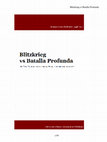
El inminente desarrollo de la Blitzkrieg comenzó con la derrota alemana en la Primera Guerra Mund... more El inminente desarrollo de la Blitzkrieg comenzó con la derrota alemana en la Primera Guerra Mundial. Poco después del conflicto, la Reichswehr creó comités de oficiales veteranos para evaluar 57 cuestiones de la guerra. Los informes de estos comités dieron forma a publicaciones de doctrinas y entrenamientos que serían estándares en la Segunda Guerra Mundial. La Reichswehr estaba influida por su análisis del pensamiento militar alemán de la preguerra, en particular de sus tácticas de infiltración y la guerra de maniobras que dominó el Frente Oriental.
La historia militar alemana estaba muy influida por Carl von Clausewitz, Alfred von Schlieffen y Helmuth von Moltke, que eran partidarios de la maniobra, la masa y la maniobra envolvente. Sus conceptos fueron aplicados con éxito en la Guerra franco-prusiana y en el intento del Plan Schlieffen. Durante la guerra, estos conceptos fueron modificados por la Reichswehr. Su jefe de Estado Mayor, Hans von Seeckt, se alejó de la doctrina argumentando que se centraba demasiado en el envolvimiento basado en la velocidad. La velocidad daba sorpresa, y ésta permitía su explotación si las decisiones se tomaban rápidamente y la movilidad daba flexibilidad y velocidad. Von Seeckt abogó por efectuar rupturas contra el centro del enemigo cuando era más rentable que los envolvimientos, o donde los envolvimientos no eran prácticos.
Bajo el mando de Von Seeckt, la actualización moderna del sistema doctrinal recibió el nombre de Bewegungskrieg, en alemán guerra de movimiento, y su sistema de tácticas denominado Auftragstaktik, en alemán Misión-tipo táctica, fue desarrollado dando lugar al conocido efecto Blitzkrieg. Además, rechazó la noción de masa que habían defendido Von Schlieffen y Von Moltke.
The Third Reich, which was spawned on January 30, 1933, was born out of the National Socialist Wo... more The Third Reich, which was spawned on January 30, 1933, was born out of the National Socialist Workers’ Party, which was the very embodiment of Adolf Hitler himself. On April 20, 1889, its Führer (Leader) was cast upon the unsuspecting world at Braunau, Upper Austria. At the age of nine he became a choirboy in the Catholic Church at Lambach, and claimed in later years that his great vocal power had developed while singing hymns. He was an average, lazy and rebellious student, with a talent for drawing. This talent decided him on a career in art. His oratorical rehearsals were not overlooked. August Kubizek, his close boyhood friend, recalled young Adolf practising elocution in an open field. From his schooldays Hitler was a fanatical German Nationalist with a rancorous hatred of others, mostly Slavic races which made up the Austro-Hungarian Empire.

One of the simplest methods of sealing off a break-through or eliminating a penetration is the fr... more One of the simplest methods of sealing off a break-through or eliminating a penetration is the frontal counterattack. Usually, such a counterattack can be launched only if the break-through is minor and can be localized, and if both shoulders are secure. Moreover, sufficient reserves must be available to close the breach by a quick counterthrust before the enemy is able to widen the gap, Once hostile preparations for a break-through have been clearly recognized, it is most effective to move the reserves close to the rear of the threatened sector. While the reserves must be close enough for instantaneous effective employment, they should be sufficiently removed from the front line so as not to forfeit prematurely their freedom of maneuver. In their assembly areas the reserves must be concealed from enemy observation and air attacks and must not be exposed to hostile preparation fire.
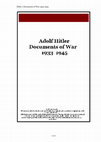
Speech by Herr Hitler to the Reichstag on September 1, 1939
FOR months we have been suffering und... more Speech by Herr Hitler to the Reichstag on September 1, 1939
FOR months we have been suffering under the torture of a problem which the Versailles Diktat created-a problem which has deteriorated until it becomes intolerable for us. Danzig was and is a German city. The Corridor was and is German. Both these territories owe their cultural development exclusively to the German people. Danzig was separated from us, the Corridor was annexed by Poland. As in other German territories of the East, all German minorities living there have been ill-treated in the most distressing manner. More than 1,000,000 people of German blood had in the years 1919-20 to leave their homeland.
As always, I attempted to bring about, by the peaceful method of making proposals for revision, an alteration of this intolerable position. It is a lie when the outside world says that we only tried to carry through our revisions by pressure. Fifteen years before the National Socialist Party came to power there was the opportunity of carrying out these revisions by peaceful settlements and understanding. On my own initiative I have, not once but several times, made proposals for the revision of intolerable conditions. All these proposals, as you know, have been rejected-proposals for limitation of armaments and ever, if necessary, disarmament, proposals for the limitation of war-making, proposals for the elimination of certain methods of modern warfare. You know the proposals that I have made to fulfil the necessity of restoring German sovereignty over German territories. You know the endless attempts I made for a peaceful clarification and understanding of the problem of Austria, and later of the problem of the Sudetenland, Bohemia, and Moravia. It was all in vain.
It is impossible to demand that an impossible position should be cleared up by peaceful revision and at the same time constantly reject peaceful revision. It is also impossible to say that he who undertakes to carry out these revisions for himself transgresses a law, since the Versailles Diktat is not law to us. A signature was forced out of us with pistols at our head and with the threat of hunger for millions of people. And then this document, with our signature, obtained by force, was proclaimed as a solemn law.
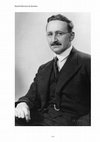
El Uso del Conocimiento en la Sociedad
F. A. Hayek
En este ensayo, que ha llegado a ser un clás... more El Uso del Conocimiento en la Sociedad
F. A. Hayek
En este ensayo, que ha llegado a ser un clásico de nuestro tiempo, Hayek planteó por primera vez su tesis de que el sistema de precios es un desarrollo social que ha resultado de la evolución y no del diseño deliberado, y que permite detectar y transmitir la información económica que se encuentra dispersa y fragmentada entre miles y miles de individuos. Emerge así una teoría que ve en el mercado un método de transmisión y utilización del conocimiento.
¿Cuál es el problema que queremos resolver cuando tratamos de construir un orden económico racional? Basándose en ciertos supuestos comunes, la respuesta es bastante simple. Si poseemos toda la información pertinente y podemos partir de un sistema dado de preferencia contando con un completo conocimiento de los medios disponibles, el problema que queda es puramente de lógica. En otras palabras, la respuesta a la pregunta referente al mejor uso de los medios disponibles se encuentra implícita en nuestros supuestos. Las condiciones que debe satisfacer la solución de este problema óptimo han sido detalladamente elaboradas y pueden ser mejor establecidas en forma matemática: expresadas brevemente, las tasas marginales de substitución entre dos bienes o factores cualesquiera deben ser iguales en todos sus usos diferentes.
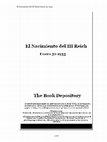
Aunque nunca se ha podido determinar la fecha exacta, se supone que hacia fines de 1876 apareció ... more Aunque nunca se ha podido determinar la fecha exacta, se supone que hacia fines de 1876 apareció en Dollersheim, localidad de la Baja Austria, un tal Johann Nepomuk Hiedler, al que acompañaban tres de sus familiares. Procedían de Spital, pueblo situado a unos veinte kilómetros de aquella localidad. Se presentó en la parroquia y manifestó que deseaba legitimar al hijastro de su hermano, Johann Georg, quien ya contaba cinco años de edad cuando éste contrajo matrimonio con Anna Schicklgruber, madre del niño. Tal vez el buen párroco quedó convencido con unos cuantos embustes. El caso es que procedió a efectuar en el Registro Civil la enmienda solicitada, por lo cual —a petición, claro está—, el apellido anterior, de rancio regusto campesino, se transformó en Hitler, de diferente grafía y mayor sonoridad. Lo que el párroco ignoraba —o acaso pretendió ignorar—, es que el supuesto padre había dejado de existir veinte años atrás y que la madre también había fallecido, haría unos treinta. Tan singular legitimación, del todo improcedente a tenor de lo prescrito por las leyes, constituía, pues, una manifiesta falsedad.

ON JULY 20, 1922, a protocol of arbitration and a supplementary act were signed in Washington by ... more ON JULY 20, 1922, a protocol of arbitration and a supplementary act were signed in Washington by the plenipotentiaries of Chile and Peru, providing for submission to arbitration by the President of the United States of the major issue in the long-standing controversy between Chile and Peru arising out of the non-execution of Article 3 of the Treaty of Ancon, which brought to a close the war of the Pacific.
Article 3 of that treaty reads as follows:
"The territory of the provinces of Tacna and Arica . . . shall continue in the possession (continuará poseido) of Chile, subject to Chilean legislation and authority for a period of ten years from the date of the ratification of the present treaty of peace. At the expiration of that term, a plebiscite will decide, by popular vote, whether the territory of the provinces above-mentioned is to remain (queda) definitely under the dominion and sovereignty of Chile or is to continue to constitute a part (continua siendo parte) of Peru. That country of the two to which the provinces of Tacna and Arica thus remain annexed (queden anexadas) shall pay to the other ten millions of pesos of Chilean silver or of Peruvian soles of equal weight and fineness.
"A special protocol, which shall be considered an integral part of the present treaty, will determine the form in which the plebiscite is to be carried out and the terms and time for the payment of the ten millions by the nation which remains the owner (dueño) of the provinces of Tacna and Arica."
Edicion No 1 Marzo 2015
Contenido
Batalla de Cannas 7
... more Edicion No 1 Marzo 2015
Contenido
Batalla de Cannas 7
El Tratado de Versalles 15
El comunismo ruso 44
The World According to Kissinger 77
Power to the Poor 84
Carta de Europa: El surgimiento de la ‘cuestión alemana’ 90
Nueva Fiscalidad:por un mejor crecimiento 95
Fiscalidad en America Latina 97
La refutación de Keynes 103
The Evolution of the Airland Battle Concept 124
AirLand Battle Doctrine 138
Deep Battle 144
Basic principles 147
Deep Operations during World War II 155
Battle of Kursk 159
Mission-type tactics 161
Books by Gustavo Urueña A

El 6.º Ejército alemán participó en la Primera y la Segunda Guerra Mundial dentro del Ejército Im... more El 6.º Ejército alemán participó en la Primera y la Segunda Guerra Mundial dentro del Ejército Imperial y de la Wehrmacht, respectivamente. Este ejército es conocido por haber sido rodeado y destruido en la batalla de Stalingrado por el Ejército Rojo.
El 6.º Ejército fue creado en 1907, siendo el general Colmar von der Goltz su primer Inspector General. Antes de estallar la guerra, el coronel general duque Alberto de Wurtemberg fue nombrado Inspector General del 6.º Ejército, que se encontraba estacionado en Stuttgart.
En agosto de 1914, el príncipe heredero de Baviera, Rodolfo de Baviera , recibió el mando del 6.º Ejército, compuesto por tres Cuerpos de ejército bávaros, un Cuerpo prusiano y otro Cuerpo bávaro en la reserva. El general Konrad Krafft von Dellmensingen fue nombrado Jefe del Estado Mayor del 6.º Ejército.
Esperando una ofensiva francesa en Alsacia y Lorena, denominada Plan XVII, se ordenó a los Ejércitos 6.º y 7.º proteger el flanco izquierdo del frente. Se encargó al príncipe Rodolfo contener la ofensiva francesa en su sector, mientras los otros ejércitos alemanes ejecutaban el Plan Schlieffen , pero éste persuadió al mariscal Helmuth Johan von Moltke para que les permitiese ejecutar una contraofensiva.
La ofensiva francesa en Lorena se inició el 14 de agosto de 1914, cuando el II Ejército francés, comandado por el general Noël de Castelnau, se acercó a Sarrebourg. Los franceses habían subestimado las fuerzas alemanas en Lorena y no sabían que ocho Cuerpos de ejército alemanes integrados en dos ejércitos les ha rían frente. Inicialmente, los ejércitos alemanes en Lorena no ofrecieron mucha resistencia, esforzándose en comprometer únicamente el flanco derecho francés, con el objetivo de dificultar el movimiento de tropas enemigas a Bélgica una vez que los Aliados descubrieran la intensidad de la ofensiva alemana en el norte. El 19 de agosto, las fuerzas de Castelnau alcanzaron las líneas defensivas del 6.º Ejército alemán, que empezó a ocasionar fuertes bajas a los franceses. El II Ejército francés tuvo que retroceder hasta Nancy, pero no fue perseguido inmediatamente por los alemanes.

The Hussars of the 12th Cavalry Brigade were attached to the 5th Cavalry Division, which was subo... more The Hussars of the 12th Cavalry Brigade were attached to the 5th Cavalry Division, which was subordinated to the First Cavalry Corps. It formed part of the German Third Army that enacted the attack on France and Belgium in August 1914 as part of the pre-war Schlieffen Plan. He crossed the Meuse river at Dinant. It was involved in heavy action against the French VIII Cavalry Corps and fought in Belgium at Namur on 23–24 August and again at St. Quentin. The 5th Cavalry continued its drive into France after the Battle of the Frontiers, but was stopped at the First Battle of the Marne in September. In recognition for bravery in combat, Wolfram was awarded the Iron Cross Second Class (1914) on 21 September 1914. The modern combat environment damaged the effectiveness of cavalry, and thus Richthofen’s division was transferred to the Eastern Front, in Poland that November
On the Eastern Front, the Cavalry Division was mostly deployed in the south. Little combat took place, as the German army did not use cavalry as frequently. The division was kept mainly in reserve. Richthofen’s brigade served near Pinsk in 1916, and the division would spend late 1915 to January 1917 of defensive operations in the Pripet Marshes. Richthofen was made commander of the horse depot of the Brigade in the autumn, 1916 and was promoted to Squadron Commander, with 160 men under his command. This was never going to garner him the level of fame his cousins, Lothar and Manfred, were now achieving in the Luftstreitkräfte (Imperial Air Service). They personally encouraged him to join as an airman. He finally did so in June 1917.

Arado Ar 234 Blitz
Desarrollo
En 1940 los Ing Walter Blume y Hans Rebeski iniciaron el diseño de... more Arado Ar 234 Blitz
Desarrollo
En 1940 los Ing Walter Blume y Hans Rebeski iniciaron el diseño de un avion destinado al reconocimiento que no estaria armado ya que volaria tan alto y tan rapido que en la practica ningun caza de su epoca podia alcanzarlo. Esto seria posible debido a que se utilizarian motores turbojet, que estaban en las etapas iniciales de desarrollo por parte de la BMW y la Junkers. En 1941 sometieron el diseño al Ministerio del Aire como Ar -234.
El diseño consistia en un aeroplano de diseño extremadamente limpio, totalmente metalico, de cuerpo muy angosto, alas en posicion alta, impulsado por dos motores jet, cabina totalmente en plexiglass; el mayor inconveniente era que por el tipo de diseño del fuselaje y haberse utilizado la totalidad del mismo para almacenar combustible, debido a que uno de los requisitos iniciales era una autonomia de 2200km, el tren de aterrizaje no podia ser de tipo retractil, por esto se utilizo una estructura tipo trolley para despegar y un patin con balancines en las alas para aterrizar. Todos los controles de vuelo era operados manualmente y del tipo convencional.
Planta Motriz
El motor seleccionado inicialmente era el 109-004A desarrollado por Junkers, la construccion del primer prototipo Ar 234 V1 se inicio en la primavera de 1941, habiendose comprometido Junkers en entregar el motor en 10 meses, sin embargo el motor presento gran cantidad de problemas y no pudo ser evaluado sino hasta Marzo de 1942, pero Junkers no suministro el motor prometido sino hasta Febrero de 1943, lo que es muy curioso es que Junkers habia entregado para evaluacion en el Messerschmitt Me 262, dos motores en Julio de 1942, no pudiendo el primer prototipo volar sino hasta Junio de 1943. El motor Jumo 004B Orkan, del tipo turbojet, utilizaba combustible tipo J2, alojado en dos tanques en el fuselaje; el compartimiento delantero alojaba 1800 lts y el trasero 2000 lts.

Adolf Hitler
Mi Testamento Político
Desde que, en 1914, puse mis modestas tuerzas como voluntario... more Adolf Hitler
Mi Testamento Político
Desde que, en 1914, puse mis modestas tuerzas como voluntario al servicio de la Primera Guerra Mundial impuesta al Reich, han transcurrido más de treinta años.
Durante estos tres decenios, en todos mis pensamientos, actos y en toda mi vida sólo me han movido el amor y la lealtad hacia mi pueblo. Ellos me han dado la fuerza necesaria para tomar las más difíciles decisiones que haya tenido que tomar cualquier mortal. Durante estos tres decenios, he gastado mi tiempo, mi energía y mi salud.
Es falso que yo o cualquier otra persona en Alemania quisiera la guerra en 1939. La querían y la instigaban exclusivamente los estadistas internacionales que, o bien eran de ascendencia judía o trabajaban a favor de los judíos. Son demasiados los ofrecimientos de limitación de armamento que hice y que el mundo no podrá seguir desmintiendo durante toda la eternidad, para que deba recaer sobre mí la responsabilidad por el desencadenamiento de esta guerra. Nunca deseé que, después de la primera y funesta Guerra Mundial, hubiera otra contra Inglaterra o contra Norteamérica. Pasarán siglos, pero de las ruinas de nuestras ciudades y monumentos seguirá brotando, renovado, el odio contra el pueblo que, en última instancia, es el responsable de todo esto: |el judaísmo internacional y sus secuaces!
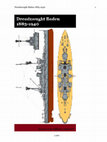
The Bayern class was a class of four super-dreadnought battleships built by the German Kaiserlich... more The Bayern class was a class of four super-dreadnought battleships built by the German Kaiserliche Marine (Imperial Navy). The class comprised Bayern, Baden, Sachsen, and Württemberg. Construction started on the ships shortly before World War I; Baden was laid down in 1913, Bayern and Sachsen followed in 1914, and Württemberg, the final ship, was laid down in 1915. Only Baden and Bayern were completed, due to shipbuilding priorities changing as the war dragged on. It was determined that U-boats were more valuable to the war effort, and so work on new battleships was slowed and ultimately stopped altogether. As a result, Bayern and Baden were the last German battleships completed by the Kaiserliche Marine. Bayern and Baden were commissioned into the fleet in July 1916 and March 1917, respectively. This was too late for either ship to take part in the Battle of Jutland on 31 May and 1 June 1916. Bayern was assigned to the naval force that drove the Imperial Russian Navy from the Gulf of Riga during Operation Albion in October 1917, though the ship was severely damaged from a mine and had to be withdrawn to Kiel for repairs. Baden replaced Friedrich der Grosse as the flagship of the High Seas Fleet, but saw no combat. Both vessels were interned in Scapa Flow following the Armistice in November 1918. Rear Admiral Ludwig von Reuter, the commander of the interned German fleet, ordered his ships be sunk on 21 June 1919; Bayern was successfully scuttled, though British guards managed to beach Baden to prevent her from sinking. The ship was eventually expended as a gunnery target in 1921. Sachsen and Württemberg, both at various stages of completion when the war ended, were broken up for scrap metal.
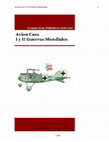
La palabra "caza" fue usada por primera vez para describir un avión biplaza con la fuerza de sust... more La palabra "caza" fue usada por primera vez para describir un avión biplaza con la fuerza de sustentación suficiente para llevar una ametralladora y su operador, así como al piloto. El primero de estos "cazas" pertenecía a la serie "Gunbus", una serie de aviones experimentales provistos de armas de la compañía británica Vickers que culminó en el modelo Vickers F.B.5 de 1914. El principal inconveniente de este tipo de aviones fue su falta de velocidad. En seguida se vio que un avión con intención de destruir a otro de su tipo en el aire por lo menos necesitaba ser lo suficientemente rápido como para alcanzar a su presa.
Por fortuna ya existía otro tipo de avión militar, que debía servir de base para un "caza" efectivo en el sentido moderno de la palabra. Estaba basado en el pequeño y rápido avión desarrollado antes de la guerra para carreras aéreas tales como la Copa Gordon Bennett y la Copa Schneider. Éste era el avión "explorador" (en inglés: scout) o de reconocimiento militar, que no estaba preparado para poder llevar armamento importante, sino que más bien se confiaba en su velocidad para poder llegar a la posición que se quería explorar o reconocer y luego regresar rápidamente para informar. Al mismo tiempo, por su velocidad era un blanco difícil para la artillería antiaérea o aviones armados enemigos. Los aviones británicos "exploradores" en este sentido incluían el Sopwith Tabloid y el Bristol Scout; entre los equivalentes franceses destacaba el ligero y veloz Morane-Saulnier N.

As German industry focused on mechanization and the synthetic manufacturing of fuel and rubber, t... more As German industry focused on mechanization and the synthetic manufacturing of fuel and rubber, the German General Staff engaged in a series of war games and planning scenarios. These were not only designed to stimulate the intellect, but also to field test emerging theory and doctrine. The author of this study recognizes that these exercises were important to the development of maneuver warfare, but that they were not generally debated. Still, several key factors of operational level planning significance are germane to this monograph. Of particular interest were the planning against Poland in the late 1920s, the maneuvers of 1928-1929, and the Fünkubung (radio exercise) of 1932. These three exercises began to address what might be construed as the operational level of war and to define the conduct of future operations.
The late 1920s saw the beginning of realistic operational planning against Poland. The Truppenamt (which later became the General Staff) envisioned three operational objectives for the war planners: Gdynia’s port facilities, the seaplane stations at Puck and Rewa, and Gdynia’s costal defense batteries. Initially planned as an all-army operation, intelligence reports determined that a marine company, a battery of coastal artillery, and a railroad battery had recently been deployed in and around the port of Gdynia. The army simply did not have enough time to get to Gdynia without encountering significant Polish resistance, and without losing valuable time that would allow the preparation and occupation of defensive positions. This dilemma was the genesis of Studie Gdingen (Study Gdynia). Operational planning was quickly turned over to the navy for further study. Studie Gdingen eventually contained four distinct phases: shelling the port; clearing mines; landing troops; and destruction of the port. A light task force of cruisers and fast-attack vessels would deploy within hours of a ground invasion with three missions: locate harbor mines; prevent the Polish navy from exiting the port; and act as a covering force until the heavy task force arrived 24 hours later. The heavy task force, comprised of heavy-ships, would shell neighboring airfields and defensive batteries in preparation for an amphibious assault. Infantry landing vessels behind minesweepers would enter and destroy the port. In summary, the navy utilized blitzkrieg-associated concepts substituting cruisers for tanks and battle ships for artillery and utilizing infantry to destroy strong points.
Amongst many notable generals in World War II, G. K. Zhukov was placed at the top in the respect ... more Amongst many notable generals in World War II, G. K. Zhukov was placed at the top in the respect of number and scale of victories and his talent in operational and strategic command was recognized by many people. Many famous military leaders in the world such as Bernard Law Montgomery, Dwight David Eisenhower and Jean de Lattre de Tassigny had already recognized Zhukov's great contributions in many important victories in the Second World War. His combat achievements became valuable heritages in humanity's military knowledge, exerted great influence on both the Soviet and the whole world's military theory.

The Battle of Cannae was a major battle of the Second Punic War, which took place on August 2, 21... more The Battle of Cannae was a major battle of the Second Punic War, which took place on August 2, 216 BC near the town of Cannae in Apulia in southeast Italy. The army of Carthage under Hannibal decisively defeated a numerically superior army of the Roman Republic under command of the consuls Lucius Aemilius Paullus and Gaius Terentius Varro. It is regarded as one of the greatest tactical feats in military history and, in numbers killed, the second greatest defeat of Rome (second to the Battle of Arausio).
Having recovered from their previous losses at Trebia (218 BC) and Trasimene (217 BC), the Romans decided to engage Hannibal at Cannae, with roughly 86,000 Roman and Allied troops. The Romans massed their heavy infantry in a deeper formation than usual while Hannibal utilized the double-envelopment tactic. This was so successful that the Roman army was effectively destroyed as a fighting force. Following the Battle of Cannae, Capua and several other Italian city-states defected from the Roman Republic to Carthage.
El nombre de Tolima provendría del término panche tolima, tulima o dulima - río de nieve o nube).... more El nombre de Tolima provendría del término panche tolima, tulima o dulima - río de nieve o nube). Las primeras menciones al territorio o personas relacionadas con la palabra Tolima la da Baltasar Maldonado que la mencionan como límite de Ibagué en el acta de los aposentos de Cayma del 26 de agosto de 1551.
«La cual dicha loma va a dar a un Morro Nevado y aguas vertientes a dicha loma, hacia las poblazones de Tolima, y las dichas poblazones de Tolima sea y nombró por terminó de la ciudad de Ibagué»
Baltasar Maldonado.

As early as 1925, Hitler suggested in Mein Kampf that he would invade the Soviet Union, asserting... more As early as 1925, Hitler suggested in Mein Kampf that he would invade the Soviet Union, asserting that the German people needed Lebensraum ("living space", i.e., land and raw materials) and that these should be sought in the East. Nazism viewed the Soviet Union (and all of Eastern Europe) as populated by "Untermensch" Slavs, ruled by "Jewish Bolshevik" masters. Mein Kampf said Germany's destiny was to turn "to the East" as it did "six hundred years ago" and "the end of the Jewish domination in Russia will also be the end of Russia as a State." Thereafter, Hitler spoke of an inescapable battle against "pan-Slav ideals", in which victory would lead to "permanent mastery of the world", although he also said they would "walk part of the road with the Russians, if that will help us". Accordingly, it was stated Nazi policy to kill, deport, or enslave the majority of Russian and other Slavic populations and repopulate the land with Germanic peoples.


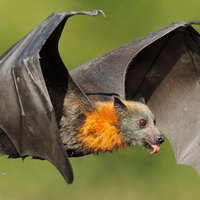



Uploads
Papers by Gustavo Urueña A
La historia militar alemana estaba muy influida por Carl von Clausewitz, Alfred von Schlieffen y Helmuth von Moltke, que eran partidarios de la maniobra, la masa y la maniobra envolvente. Sus conceptos fueron aplicados con éxito en la Guerra franco-prusiana y en el intento del Plan Schlieffen. Durante la guerra, estos conceptos fueron modificados por la Reichswehr. Su jefe de Estado Mayor, Hans von Seeckt, se alejó de la doctrina argumentando que se centraba demasiado en el envolvimiento basado en la velocidad. La velocidad daba sorpresa, y ésta permitía su explotación si las decisiones se tomaban rápidamente y la movilidad daba flexibilidad y velocidad. Von Seeckt abogó por efectuar rupturas contra el centro del enemigo cuando era más rentable que los envolvimientos, o donde los envolvimientos no eran prácticos.
Bajo el mando de Von Seeckt, la actualización moderna del sistema doctrinal recibió el nombre de Bewegungskrieg, en alemán guerra de movimiento, y su sistema de tácticas denominado Auftragstaktik, en alemán Misión-tipo táctica, fue desarrollado dando lugar al conocido efecto Blitzkrieg. Además, rechazó la noción de masa que habían defendido Von Schlieffen y Von Moltke.
FOR months we have been suffering under the torture of a problem which the Versailles Diktat created-a problem which has deteriorated until it becomes intolerable for us. Danzig was and is a German city. The Corridor was and is German. Both these territories owe their cultural development exclusively to the German people. Danzig was separated from us, the Corridor was annexed by Poland. As in other German territories of the East, all German minorities living there have been ill-treated in the most distressing manner. More than 1,000,000 people of German blood had in the years 1919-20 to leave their homeland.
As always, I attempted to bring about, by the peaceful method of making proposals for revision, an alteration of this intolerable position. It is a lie when the outside world says that we only tried to carry through our revisions by pressure. Fifteen years before the National Socialist Party came to power there was the opportunity of carrying out these revisions by peaceful settlements and understanding. On my own initiative I have, not once but several times, made proposals for the revision of intolerable conditions. All these proposals, as you know, have been rejected-proposals for limitation of armaments and ever, if necessary, disarmament, proposals for the limitation of war-making, proposals for the elimination of certain methods of modern warfare. You know the proposals that I have made to fulfil the necessity of restoring German sovereignty over German territories. You know the endless attempts I made for a peaceful clarification and understanding of the problem of Austria, and later of the problem of the Sudetenland, Bohemia, and Moravia. It was all in vain.
It is impossible to demand that an impossible position should be cleared up by peaceful revision and at the same time constantly reject peaceful revision. It is also impossible to say that he who undertakes to carry out these revisions for himself transgresses a law, since the Versailles Diktat is not law to us. A signature was forced out of us with pistols at our head and with the threat of hunger for millions of people. And then this document, with our signature, obtained by force, was proclaimed as a solemn law.
F. A. Hayek
En este ensayo, que ha llegado a ser un clásico de nuestro tiempo, Hayek planteó por primera vez su tesis de que el sistema de precios es un desarrollo social que ha resultado de la evolución y no del diseño deliberado, y que permite detectar y transmitir la información económica que se encuentra dispersa y fragmentada entre miles y miles de individuos. Emerge así una teoría que ve en el mercado un método de transmisión y utilización del conocimiento.
¿Cuál es el problema que queremos resolver cuando tratamos de construir un orden económico racional? Basándose en ciertos supuestos comunes, la respuesta es bastante simple. Si poseemos toda la información pertinente y podemos partir de un sistema dado de preferencia contando con un completo conocimiento de los medios disponibles, el problema que queda es puramente de lógica. En otras palabras, la respuesta a la pregunta referente al mejor uso de los medios disponibles se encuentra implícita en nuestros supuestos. Las condiciones que debe satisfacer la solución de este problema óptimo han sido detalladamente elaboradas y pueden ser mejor establecidas en forma matemática: expresadas brevemente, las tasas marginales de substitución entre dos bienes o factores cualesquiera deben ser iguales en todos sus usos diferentes.
Article 3 of that treaty reads as follows:
"The territory of the provinces of Tacna and Arica . . . shall continue in the possession (continuará poseido) of Chile, subject to Chilean legislation and authority for a period of ten years from the date of the ratification of the present treaty of peace. At the expiration of that term, a plebiscite will decide, by popular vote, whether the territory of the provinces above-mentioned is to remain (queda) definitely under the dominion and sovereignty of Chile or is to continue to constitute a part (continua siendo parte) of Peru. That country of the two to which the provinces of Tacna and Arica thus remain annexed (queden anexadas) shall pay to the other ten millions of pesos of Chilean silver or of Peruvian soles of equal weight and fineness.
"A special protocol, which shall be considered an integral part of the present treaty, will determine the form in which the plebiscite is to be carried out and the terms and time for the payment of the ten millions by the nation which remains the owner (dueño) of the provinces of Tacna and Arica."
Contenido
Batalla de Cannas 7
El Tratado de Versalles 15
El comunismo ruso 44
The World According to Kissinger 77
Power to the Poor 84
Carta de Europa: El surgimiento de la ‘cuestión alemana’ 90
Nueva Fiscalidad:por un mejor crecimiento 95
Fiscalidad en America Latina 97
La refutación de Keynes 103
The Evolution of the Airland Battle Concept 124
AirLand Battle Doctrine 138
Deep Battle 144
Basic principles 147
Deep Operations during World War II 155
Battle of Kursk 159
Mission-type tactics 161
Books by Gustavo Urueña A
El 6.º Ejército fue creado en 1907, siendo el general Colmar von der Goltz su primer Inspector General. Antes de estallar la guerra, el coronel general duque Alberto de Wurtemberg fue nombrado Inspector General del 6.º Ejército, que se encontraba estacionado en Stuttgart.
En agosto de 1914, el príncipe heredero de Baviera, Rodolfo de Baviera , recibió el mando del 6.º Ejército, compuesto por tres Cuerpos de ejército bávaros, un Cuerpo prusiano y otro Cuerpo bávaro en la reserva. El general Konrad Krafft von Dellmensingen fue nombrado Jefe del Estado Mayor del 6.º Ejército.
Esperando una ofensiva francesa en Alsacia y Lorena, denominada Plan XVII, se ordenó a los Ejércitos 6.º y 7.º proteger el flanco izquierdo del frente. Se encargó al príncipe Rodolfo contener la ofensiva francesa en su sector, mientras los otros ejércitos alemanes ejecutaban el Plan Schlieffen , pero éste persuadió al mariscal Helmuth Johan von Moltke para que les permitiese ejecutar una contraofensiva.
La ofensiva francesa en Lorena se inició el 14 de agosto de 1914, cuando el II Ejército francés, comandado por el general Noël de Castelnau, se acercó a Sarrebourg. Los franceses habían subestimado las fuerzas alemanas en Lorena y no sabían que ocho Cuerpos de ejército alemanes integrados en dos ejércitos les ha rían frente. Inicialmente, los ejércitos alemanes en Lorena no ofrecieron mucha resistencia, esforzándose en comprometer únicamente el flanco derecho francés, con el objetivo de dificultar el movimiento de tropas enemigas a Bélgica una vez que los Aliados descubrieran la intensidad de la ofensiva alemana en el norte. El 19 de agosto, las fuerzas de Castelnau alcanzaron las líneas defensivas del 6.º Ejército alemán, que empezó a ocasionar fuertes bajas a los franceses. El II Ejército francés tuvo que retroceder hasta Nancy, pero no fue perseguido inmediatamente por los alemanes.
On the Eastern Front, the Cavalry Division was mostly deployed in the south. Little combat took place, as the German army did not use cavalry as frequently. The division was kept mainly in reserve. Richthofen’s brigade served near Pinsk in 1916, and the division would spend late 1915 to January 1917 of defensive operations in the Pripet Marshes. Richthofen was made commander of the horse depot of the Brigade in the autumn, 1916 and was promoted to Squadron Commander, with 160 men under his command. This was never going to garner him the level of fame his cousins, Lothar and Manfred, were now achieving in the Luftstreitkräfte (Imperial Air Service). They personally encouraged him to join as an airman. He finally did so in June 1917.
Desarrollo
En 1940 los Ing Walter Blume y Hans Rebeski iniciaron el diseño de un avion destinado al reconocimiento que no estaria armado ya que volaria tan alto y tan rapido que en la practica ningun caza de su epoca podia alcanzarlo. Esto seria posible debido a que se utilizarian motores turbojet, que estaban en las etapas iniciales de desarrollo por parte de la BMW y la Junkers. En 1941 sometieron el diseño al Ministerio del Aire como Ar -234.
El diseño consistia en un aeroplano de diseño extremadamente limpio, totalmente metalico, de cuerpo muy angosto, alas en posicion alta, impulsado por dos motores jet, cabina totalmente en plexiglass; el mayor inconveniente era que por el tipo de diseño del fuselaje y haberse utilizado la totalidad del mismo para almacenar combustible, debido a que uno de los requisitos iniciales era una autonomia de 2200km, el tren de aterrizaje no podia ser de tipo retractil, por esto se utilizo una estructura tipo trolley para despegar y un patin con balancines en las alas para aterrizar. Todos los controles de vuelo era operados manualmente y del tipo convencional.
Planta Motriz
El motor seleccionado inicialmente era el 109-004A desarrollado por Junkers, la construccion del primer prototipo Ar 234 V1 se inicio en la primavera de 1941, habiendose comprometido Junkers en entregar el motor en 10 meses, sin embargo el motor presento gran cantidad de problemas y no pudo ser evaluado sino hasta Marzo de 1942, pero Junkers no suministro el motor prometido sino hasta Febrero de 1943, lo que es muy curioso es que Junkers habia entregado para evaluacion en el Messerschmitt Me 262, dos motores en Julio de 1942, no pudiendo el primer prototipo volar sino hasta Junio de 1943. El motor Jumo 004B Orkan, del tipo turbojet, utilizaba combustible tipo J2, alojado en dos tanques en el fuselaje; el compartimiento delantero alojaba 1800 lts y el trasero 2000 lts.
Mi Testamento Político
Desde que, en 1914, puse mis modestas tuerzas como voluntario al servicio de la Primera Guerra Mundial impuesta al Reich, han transcurrido más de treinta años.
Durante estos tres decenios, en todos mis pensamientos, actos y en toda mi vida sólo me han movido el amor y la lealtad hacia mi pueblo. Ellos me han dado la fuerza necesaria para tomar las más difíciles decisiones que haya tenido que tomar cualquier mortal. Durante estos tres decenios, he gastado mi tiempo, mi energía y mi salud.
Es falso que yo o cualquier otra persona en Alemania quisiera la guerra en 1939. La querían y la instigaban exclusivamente los estadistas internacionales que, o bien eran de ascendencia judía o trabajaban a favor de los judíos. Son demasiados los ofrecimientos de limitación de armamento que hice y que el mundo no podrá seguir desmintiendo durante toda la eternidad, para que deba recaer sobre mí la responsabilidad por el desencadenamiento de esta guerra. Nunca deseé que, después de la primera y funesta Guerra Mundial, hubiera otra contra Inglaterra o contra Norteamérica. Pasarán siglos, pero de las ruinas de nuestras ciudades y monumentos seguirá brotando, renovado, el odio contra el pueblo que, en última instancia, es el responsable de todo esto: |el judaísmo internacional y sus secuaces!
Por fortuna ya existía otro tipo de avión militar, que debía servir de base para un "caza" efectivo en el sentido moderno de la palabra. Estaba basado en el pequeño y rápido avión desarrollado antes de la guerra para carreras aéreas tales como la Copa Gordon Bennett y la Copa Schneider. Éste era el avión "explorador" (en inglés: scout) o de reconocimiento militar, que no estaba preparado para poder llevar armamento importante, sino que más bien se confiaba en su velocidad para poder llegar a la posición que se quería explorar o reconocer y luego regresar rápidamente para informar. Al mismo tiempo, por su velocidad era un blanco difícil para la artillería antiaérea o aviones armados enemigos. Los aviones británicos "exploradores" en este sentido incluían el Sopwith Tabloid y el Bristol Scout; entre los equivalentes franceses destacaba el ligero y veloz Morane-Saulnier N.
The late 1920s saw the beginning of realistic operational planning against Poland. The Truppenamt (which later became the General Staff) envisioned three operational objectives for the war planners: Gdynia’s port facilities, the seaplane stations at Puck and Rewa, and Gdynia’s costal defense batteries. Initially planned as an all-army operation, intelligence reports determined that a marine company, a battery of coastal artillery, and a railroad battery had recently been deployed in and around the port of Gdynia. The army simply did not have enough time to get to Gdynia without encountering significant Polish resistance, and without losing valuable time that would allow the preparation and occupation of defensive positions. This dilemma was the genesis of Studie Gdingen (Study Gdynia). Operational planning was quickly turned over to the navy for further study. Studie Gdingen eventually contained four distinct phases: shelling the port; clearing mines; landing troops; and destruction of the port. A light task force of cruisers and fast-attack vessels would deploy within hours of a ground invasion with three missions: locate harbor mines; prevent the Polish navy from exiting the port; and act as a covering force until the heavy task force arrived 24 hours later. The heavy task force, comprised of heavy-ships, would shell neighboring airfields and defensive batteries in preparation for an amphibious assault. Infantry landing vessels behind minesweepers would enter and destroy the port. In summary, the navy utilized blitzkrieg-associated concepts substituting cruisers for tanks and battle ships for artillery and utilizing infantry to destroy strong points.
Having recovered from their previous losses at Trebia (218 BC) and Trasimene (217 BC), the Romans decided to engage Hannibal at Cannae, with roughly 86,000 Roman and Allied troops. The Romans massed their heavy infantry in a deeper formation than usual while Hannibal utilized the double-envelopment tactic. This was so successful that the Roman army was effectively destroyed as a fighting force. Following the Battle of Cannae, Capua and several other Italian city-states defected from the Roman Republic to Carthage.
«La cual dicha loma va a dar a un Morro Nevado y aguas vertientes a dicha loma, hacia las poblazones de Tolima, y las dichas poblazones de Tolima sea y nombró por terminó de la ciudad de Ibagué»
Baltasar Maldonado.
La historia militar alemana estaba muy influida por Carl von Clausewitz, Alfred von Schlieffen y Helmuth von Moltke, que eran partidarios de la maniobra, la masa y la maniobra envolvente. Sus conceptos fueron aplicados con éxito en la Guerra franco-prusiana y en el intento del Plan Schlieffen. Durante la guerra, estos conceptos fueron modificados por la Reichswehr. Su jefe de Estado Mayor, Hans von Seeckt, se alejó de la doctrina argumentando que se centraba demasiado en el envolvimiento basado en la velocidad. La velocidad daba sorpresa, y ésta permitía su explotación si las decisiones se tomaban rápidamente y la movilidad daba flexibilidad y velocidad. Von Seeckt abogó por efectuar rupturas contra el centro del enemigo cuando era más rentable que los envolvimientos, o donde los envolvimientos no eran prácticos.
Bajo el mando de Von Seeckt, la actualización moderna del sistema doctrinal recibió el nombre de Bewegungskrieg, en alemán guerra de movimiento, y su sistema de tácticas denominado Auftragstaktik, en alemán Misión-tipo táctica, fue desarrollado dando lugar al conocido efecto Blitzkrieg. Además, rechazó la noción de masa que habían defendido Von Schlieffen y Von Moltke.
FOR months we have been suffering under the torture of a problem which the Versailles Diktat created-a problem which has deteriorated until it becomes intolerable for us. Danzig was and is a German city. The Corridor was and is German. Both these territories owe their cultural development exclusively to the German people. Danzig was separated from us, the Corridor was annexed by Poland. As in other German territories of the East, all German minorities living there have been ill-treated in the most distressing manner. More than 1,000,000 people of German blood had in the years 1919-20 to leave their homeland.
As always, I attempted to bring about, by the peaceful method of making proposals for revision, an alteration of this intolerable position. It is a lie when the outside world says that we only tried to carry through our revisions by pressure. Fifteen years before the National Socialist Party came to power there was the opportunity of carrying out these revisions by peaceful settlements and understanding. On my own initiative I have, not once but several times, made proposals for the revision of intolerable conditions. All these proposals, as you know, have been rejected-proposals for limitation of armaments and ever, if necessary, disarmament, proposals for the limitation of war-making, proposals for the elimination of certain methods of modern warfare. You know the proposals that I have made to fulfil the necessity of restoring German sovereignty over German territories. You know the endless attempts I made for a peaceful clarification and understanding of the problem of Austria, and later of the problem of the Sudetenland, Bohemia, and Moravia. It was all in vain.
It is impossible to demand that an impossible position should be cleared up by peaceful revision and at the same time constantly reject peaceful revision. It is also impossible to say that he who undertakes to carry out these revisions for himself transgresses a law, since the Versailles Diktat is not law to us. A signature was forced out of us with pistols at our head and with the threat of hunger for millions of people. And then this document, with our signature, obtained by force, was proclaimed as a solemn law.
F. A. Hayek
En este ensayo, que ha llegado a ser un clásico de nuestro tiempo, Hayek planteó por primera vez su tesis de que el sistema de precios es un desarrollo social que ha resultado de la evolución y no del diseño deliberado, y que permite detectar y transmitir la información económica que se encuentra dispersa y fragmentada entre miles y miles de individuos. Emerge así una teoría que ve en el mercado un método de transmisión y utilización del conocimiento.
¿Cuál es el problema que queremos resolver cuando tratamos de construir un orden económico racional? Basándose en ciertos supuestos comunes, la respuesta es bastante simple. Si poseemos toda la información pertinente y podemos partir de un sistema dado de preferencia contando con un completo conocimiento de los medios disponibles, el problema que queda es puramente de lógica. En otras palabras, la respuesta a la pregunta referente al mejor uso de los medios disponibles se encuentra implícita en nuestros supuestos. Las condiciones que debe satisfacer la solución de este problema óptimo han sido detalladamente elaboradas y pueden ser mejor establecidas en forma matemática: expresadas brevemente, las tasas marginales de substitución entre dos bienes o factores cualesquiera deben ser iguales en todos sus usos diferentes.
Article 3 of that treaty reads as follows:
"The territory of the provinces of Tacna and Arica . . . shall continue in the possession (continuará poseido) of Chile, subject to Chilean legislation and authority for a period of ten years from the date of the ratification of the present treaty of peace. At the expiration of that term, a plebiscite will decide, by popular vote, whether the territory of the provinces above-mentioned is to remain (queda) definitely under the dominion and sovereignty of Chile or is to continue to constitute a part (continua siendo parte) of Peru. That country of the two to which the provinces of Tacna and Arica thus remain annexed (queden anexadas) shall pay to the other ten millions of pesos of Chilean silver or of Peruvian soles of equal weight and fineness.
"A special protocol, which shall be considered an integral part of the present treaty, will determine the form in which the plebiscite is to be carried out and the terms and time for the payment of the ten millions by the nation which remains the owner (dueño) of the provinces of Tacna and Arica."
Contenido
Batalla de Cannas 7
El Tratado de Versalles 15
El comunismo ruso 44
The World According to Kissinger 77
Power to the Poor 84
Carta de Europa: El surgimiento de la ‘cuestión alemana’ 90
Nueva Fiscalidad:por un mejor crecimiento 95
Fiscalidad en America Latina 97
La refutación de Keynes 103
The Evolution of the Airland Battle Concept 124
AirLand Battle Doctrine 138
Deep Battle 144
Basic principles 147
Deep Operations during World War II 155
Battle of Kursk 159
Mission-type tactics 161
El 6.º Ejército fue creado en 1907, siendo el general Colmar von der Goltz su primer Inspector General. Antes de estallar la guerra, el coronel general duque Alberto de Wurtemberg fue nombrado Inspector General del 6.º Ejército, que se encontraba estacionado en Stuttgart.
En agosto de 1914, el príncipe heredero de Baviera, Rodolfo de Baviera , recibió el mando del 6.º Ejército, compuesto por tres Cuerpos de ejército bávaros, un Cuerpo prusiano y otro Cuerpo bávaro en la reserva. El general Konrad Krafft von Dellmensingen fue nombrado Jefe del Estado Mayor del 6.º Ejército.
Esperando una ofensiva francesa en Alsacia y Lorena, denominada Plan XVII, se ordenó a los Ejércitos 6.º y 7.º proteger el flanco izquierdo del frente. Se encargó al príncipe Rodolfo contener la ofensiva francesa en su sector, mientras los otros ejércitos alemanes ejecutaban el Plan Schlieffen , pero éste persuadió al mariscal Helmuth Johan von Moltke para que les permitiese ejecutar una contraofensiva.
La ofensiva francesa en Lorena se inició el 14 de agosto de 1914, cuando el II Ejército francés, comandado por el general Noël de Castelnau, se acercó a Sarrebourg. Los franceses habían subestimado las fuerzas alemanas en Lorena y no sabían que ocho Cuerpos de ejército alemanes integrados en dos ejércitos les ha rían frente. Inicialmente, los ejércitos alemanes en Lorena no ofrecieron mucha resistencia, esforzándose en comprometer únicamente el flanco derecho francés, con el objetivo de dificultar el movimiento de tropas enemigas a Bélgica una vez que los Aliados descubrieran la intensidad de la ofensiva alemana en el norte. El 19 de agosto, las fuerzas de Castelnau alcanzaron las líneas defensivas del 6.º Ejército alemán, que empezó a ocasionar fuertes bajas a los franceses. El II Ejército francés tuvo que retroceder hasta Nancy, pero no fue perseguido inmediatamente por los alemanes.
On the Eastern Front, the Cavalry Division was mostly deployed in the south. Little combat took place, as the German army did not use cavalry as frequently. The division was kept mainly in reserve. Richthofen’s brigade served near Pinsk in 1916, and the division would spend late 1915 to January 1917 of defensive operations in the Pripet Marshes. Richthofen was made commander of the horse depot of the Brigade in the autumn, 1916 and was promoted to Squadron Commander, with 160 men under his command. This was never going to garner him the level of fame his cousins, Lothar and Manfred, were now achieving in the Luftstreitkräfte (Imperial Air Service). They personally encouraged him to join as an airman. He finally did so in June 1917.
Desarrollo
En 1940 los Ing Walter Blume y Hans Rebeski iniciaron el diseño de un avion destinado al reconocimiento que no estaria armado ya que volaria tan alto y tan rapido que en la practica ningun caza de su epoca podia alcanzarlo. Esto seria posible debido a que se utilizarian motores turbojet, que estaban en las etapas iniciales de desarrollo por parte de la BMW y la Junkers. En 1941 sometieron el diseño al Ministerio del Aire como Ar -234.
El diseño consistia en un aeroplano de diseño extremadamente limpio, totalmente metalico, de cuerpo muy angosto, alas en posicion alta, impulsado por dos motores jet, cabina totalmente en plexiglass; el mayor inconveniente era que por el tipo de diseño del fuselaje y haberse utilizado la totalidad del mismo para almacenar combustible, debido a que uno de los requisitos iniciales era una autonomia de 2200km, el tren de aterrizaje no podia ser de tipo retractil, por esto se utilizo una estructura tipo trolley para despegar y un patin con balancines en las alas para aterrizar. Todos los controles de vuelo era operados manualmente y del tipo convencional.
Planta Motriz
El motor seleccionado inicialmente era el 109-004A desarrollado por Junkers, la construccion del primer prototipo Ar 234 V1 se inicio en la primavera de 1941, habiendose comprometido Junkers en entregar el motor en 10 meses, sin embargo el motor presento gran cantidad de problemas y no pudo ser evaluado sino hasta Marzo de 1942, pero Junkers no suministro el motor prometido sino hasta Febrero de 1943, lo que es muy curioso es que Junkers habia entregado para evaluacion en el Messerschmitt Me 262, dos motores en Julio de 1942, no pudiendo el primer prototipo volar sino hasta Junio de 1943. El motor Jumo 004B Orkan, del tipo turbojet, utilizaba combustible tipo J2, alojado en dos tanques en el fuselaje; el compartimiento delantero alojaba 1800 lts y el trasero 2000 lts.
Mi Testamento Político
Desde que, en 1914, puse mis modestas tuerzas como voluntario al servicio de la Primera Guerra Mundial impuesta al Reich, han transcurrido más de treinta años.
Durante estos tres decenios, en todos mis pensamientos, actos y en toda mi vida sólo me han movido el amor y la lealtad hacia mi pueblo. Ellos me han dado la fuerza necesaria para tomar las más difíciles decisiones que haya tenido que tomar cualquier mortal. Durante estos tres decenios, he gastado mi tiempo, mi energía y mi salud.
Es falso que yo o cualquier otra persona en Alemania quisiera la guerra en 1939. La querían y la instigaban exclusivamente los estadistas internacionales que, o bien eran de ascendencia judía o trabajaban a favor de los judíos. Son demasiados los ofrecimientos de limitación de armamento que hice y que el mundo no podrá seguir desmintiendo durante toda la eternidad, para que deba recaer sobre mí la responsabilidad por el desencadenamiento de esta guerra. Nunca deseé que, después de la primera y funesta Guerra Mundial, hubiera otra contra Inglaterra o contra Norteamérica. Pasarán siglos, pero de las ruinas de nuestras ciudades y monumentos seguirá brotando, renovado, el odio contra el pueblo que, en última instancia, es el responsable de todo esto: |el judaísmo internacional y sus secuaces!
Por fortuna ya existía otro tipo de avión militar, que debía servir de base para un "caza" efectivo en el sentido moderno de la palabra. Estaba basado en el pequeño y rápido avión desarrollado antes de la guerra para carreras aéreas tales como la Copa Gordon Bennett y la Copa Schneider. Éste era el avión "explorador" (en inglés: scout) o de reconocimiento militar, que no estaba preparado para poder llevar armamento importante, sino que más bien se confiaba en su velocidad para poder llegar a la posición que se quería explorar o reconocer y luego regresar rápidamente para informar. Al mismo tiempo, por su velocidad era un blanco difícil para la artillería antiaérea o aviones armados enemigos. Los aviones británicos "exploradores" en este sentido incluían el Sopwith Tabloid y el Bristol Scout; entre los equivalentes franceses destacaba el ligero y veloz Morane-Saulnier N.
The late 1920s saw the beginning of realistic operational planning against Poland. The Truppenamt (which later became the General Staff) envisioned three operational objectives for the war planners: Gdynia’s port facilities, the seaplane stations at Puck and Rewa, and Gdynia’s costal defense batteries. Initially planned as an all-army operation, intelligence reports determined that a marine company, a battery of coastal artillery, and a railroad battery had recently been deployed in and around the port of Gdynia. The army simply did not have enough time to get to Gdynia without encountering significant Polish resistance, and without losing valuable time that would allow the preparation and occupation of defensive positions. This dilemma was the genesis of Studie Gdingen (Study Gdynia). Operational planning was quickly turned over to the navy for further study. Studie Gdingen eventually contained four distinct phases: shelling the port; clearing mines; landing troops; and destruction of the port. A light task force of cruisers and fast-attack vessels would deploy within hours of a ground invasion with three missions: locate harbor mines; prevent the Polish navy from exiting the port; and act as a covering force until the heavy task force arrived 24 hours later. The heavy task force, comprised of heavy-ships, would shell neighboring airfields and defensive batteries in preparation for an amphibious assault. Infantry landing vessels behind minesweepers would enter and destroy the port. In summary, the navy utilized blitzkrieg-associated concepts substituting cruisers for tanks and battle ships for artillery and utilizing infantry to destroy strong points.
Having recovered from their previous losses at Trebia (218 BC) and Trasimene (217 BC), the Romans decided to engage Hannibal at Cannae, with roughly 86,000 Roman and Allied troops. The Romans massed their heavy infantry in a deeper formation than usual while Hannibal utilized the double-envelopment tactic. This was so successful that the Roman army was effectively destroyed as a fighting force. Following the Battle of Cannae, Capua and several other Italian city-states defected from the Roman Republic to Carthage.
«La cual dicha loma va a dar a un Morro Nevado y aguas vertientes a dicha loma, hacia las poblazones de Tolima, y las dichas poblazones de Tolima sea y nombró por terminó de la ciudad de Ibagué»
Baltasar Maldonado.
(1) The stab-in-the-back doctrine first was foreshadowed, when, on October 3, 1918, the German government requested an armistice with the Allies and peace negotiations on the basis of the peace program that President Woodrow Wilson had propagated. To the German public this move was an absolutely shattering surprise. Until then the German High Command had failed to admit the increasing seriousness of Germany’s military position resulting from strategic overstretch and military exhaustion.3 Instead, all the public had perceived was that the German troops fighting in France had protected them against the direct experience of war and that in the East Germany's predominance extended as far as the Caucasus Mountains. How then could Germany’s bid be explained?4 Could it be that the million-fold sacrifice of lives had been in vain? The gap that throughout the war had yawned between far-flung popular hopes and the grim military reality thus deepened even further. Other, non military reasons, it was believed, must have been behind Germany’s sudden giving up. The German military command concealed what it had confessed to the political leadership in Berlin—that it feared German troops in France were on the verge of being routed. To avoid a public loss of face, it claimed that nonmilitary reasons lay behind Germany’s critical military situation. Ludendorff, the de facto highest commander of Germany’s troops, concocted an explanation by inventing the stab-in-the-back doctrine. Germany had sued for an armistice, he asserted in a confidential talk with his officers, because it had become impossible to continue the war. This was due to the “poison” of Marxist–Socialist propaganda that had undermined the soldiers’ resolution to go on fighting and made them “unreliable,” although the chances of a successful defense, if not victory, continued to be good.5 Ludendorff’s statement initiated a lengthy process of political onus shifting between military and civil authorities, between the Right and the Left, regarding the responsibility for the military disaster that was threatening their country.6
Actually, the antecedents of this doctrine went further back—well into the fall of 1916. At that point, under the impression of a precarious military situation during the battle of the Somme, the first doubts arose in Germany regarding the prospects of a victory. A heated controversy about the war’s purpose and Germany’s war aims broke out. The military leadership and the exponents of the nationalist right kept insisting that a total victory was indispensable that would ensure sizable annexations, improve Germany’s geopolitical position, and entail a reward for the sacrifices the German people had made. Significantly, it was also held that only the perspective of a total victory would maintain morale at home and at the front.7 The forces of the German Center and Left, not least Labor, on the other hand, pressed for a peace of accommodation based on a military tie as the only realistic way out of a war that Germany apparently could not win. The real reward of the war seemed to be liberal reforms in Prussia and the Empire.8 On July 19, 1917, a majority of the German Reichstag passed a resolution demanding just that.9 To the rightist die-hards this amounted to outright treason subverting the public morale. According to the Right, internal reforms could not be a substitute for military victory.10
El chantaje aparece crudo y descarnado cuando Inglaterra y Francia deciden iniciar el bloqueo por hambre para apoyar sus exigencias, cada vez más desorbitadas. Winston Churchill, primer Lord del Almirantazgo, declara: «Continuemos practicando el bloqueo por hambre con todo su rigor. Alemania está a punto de perecer de hambre.
Dentro de muy pocos días estará en pleno colapso... entonces será el momento de tratar con ella» (). Unos días después, Alemania debe entregar toda su flota mercante a Inglaterra.
La flota de guerra seguiría unos días después. Francia, por su parte exige el desmantelamiento de centenares de fábricas, y destruye todo lo que no puede llevarse.
En vano el mariscal Haig, comandante supremo de las fuerzas británicas aconseja poner fin a los abusos y no herir sin necesidad la dignidad del pueblo alemán. Lloyd George, Churchill y su «clique» le recuerdan que sus deberes de militar terminaron con el «alto el fuego». Ahora la palabra es de los políticos, que incluso empiezan a pelearse entre ellos por el derecho a la mayor cantidad posible de despojos del vencido. Es imposible imaginar una más cínica violación de unos acuerdos rubricados solemnemente. La Cruzada del Derecho y la Democracia se ha transformado en un Patio de Monopolio. Los acuerdos de Compiégne ya no cuentan para nada. Clemenceau proclamará, sin ambages: «Los acuerdos pasan, pero las naciones quedan». Pero hay que adoptar una apariencia de legalidad. Hay que convencer al hombre de la calle de que, siendo Alemania culpable de la guerra, justo es que sobre sus hombros caigan todas las cargas de la misma. Por eso en el «tratado» se incluye una cláusula que dice: «Las potencias aliadas declaran, y el Gobierno alemán solemnemente admite, que la culpabilidad total en el desencadenamiento de la guerra incumbe a Alemania».
El conde Brockdorff-Rantzau, jefe de la Delegación alemana en Versalles, abandona su puesto, alegando que su concepto del honor le impide apoyar, con su firma, una tal enormidad. Pero nuevamente Inglaterra y Francia amenazan con una reanudación del bloqueo y la ocupación «sine die» de territorios que, incumpliendo los acuerdos del Armisticio de Compiégne, han invadido, sobre todo en Renania y Baviera.
The most basic form of stealth? Hiding, the time-honored tradition of holding a bush in front of you as you advance on the castle, or painting splotches on your fatigues so you can blend in with the ground. This may seem silly, but in the lead-up to the World War I, a U-Boat’s stealth capabilities came almost entirely from the fact that it was simply not visible. In the time before advanced sonar and meticulous new methods of triangulation, that really was all it took. Similarly, the altitude of a spy plane counts as stealth, especially given modern research outfitting planes with non-standard cameras to spy the ground through the protection of cloud cover.
La división que seria conocida como 21° Division Panzer inicio su carrera como una pequeño fuerza enviada por Adolf Hitler en soporte a su aliado italiano Benito Mussolini, quien llevado por sus ambiciones de restablecer el Imperio Romano, lanzo una campaña en Africa con el fin de tomarse Egipto, siendo sus ejercitos destruidos por el General O’Connor de la Western Desert Force británica.
En Enero 11 de 1941, Hitler firmo la directiva No 22 para la constitucion de una pequeña fuerza de bloqueo (Sperrverband) que seria despachada a Trípoli, mientras la Luftwaffe por su parte destacaba el X Fliegerkorps a Sicilia con el fin de atacar los bases y los buques británicos en el Mediterráneo.
The first, the Waffen SS, sprang from Hitler's personal bodyguard and much like many other Guard forces in the world's long military history, developed into a completely independent army all unto itself. Though not intentionally, it most assuredly falls into a category quite similar to that held by Napoleon's Imperial Guard, whose roots also are found in a dictator's personal bodyguard. Unlike the Imperial Guard, which was Napoleon's favored children, the SS belonged not to Adolf Hitler, but to Heinrich Himmler, Reichsfuhrer der SS. It was not only a field force, but a tool in the internal political struggle between Hitler's cronies.
The A.G.N.A was an ambitious attempt on the part of both London and Berlin to reach better relations, but it ultimately foundered because of conflicting expectations between the two states. For the Germans, the A.G.N.A. was intended to mark the beginning of an Anglo-German alliance against France and the Soviet Union, whereas for the British, the A.G.N.A. was to be the beginning of a series of arms limitation agreements that were made to limit German expansionism. The A.G.N.A was highly controversial, both at the time and since, because the 35:100 tonnage ratio allowed Germany the right to build a Navy beyond the limits set by the Treaty of Versailles, and the British had made the agreement without consulting France or Italy first.